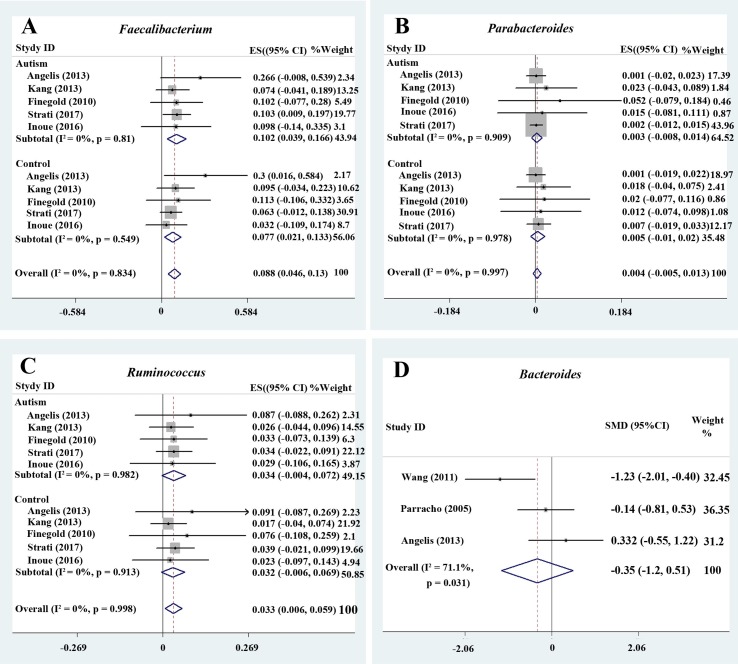Figure 3.
Forest plot of percentages of Faecalibacterium, Parabacteroides, Ruminococcus, and Bacteroides in autism spectrum disorder (ASD). (A–C) Percentages of Faecalibacterium, Parabacteroides, and Ruminococcus in the total detected microflora, respectively. Fixed-effects models were used to assess Faecalibacterium, Parabacteroides, and Ruminococcus. The pooled percentages of Faecalibacterium, Parabacteroides, and Ruminococcus from the included studies were 8.8%, 0.4%, and 3.3%, respectively. (D) Relative abundance of Bacteroides. A random-effects model was used to analyze Bacteroides, contributing to higher between-study heterogeneity (I 2 > 50%).

